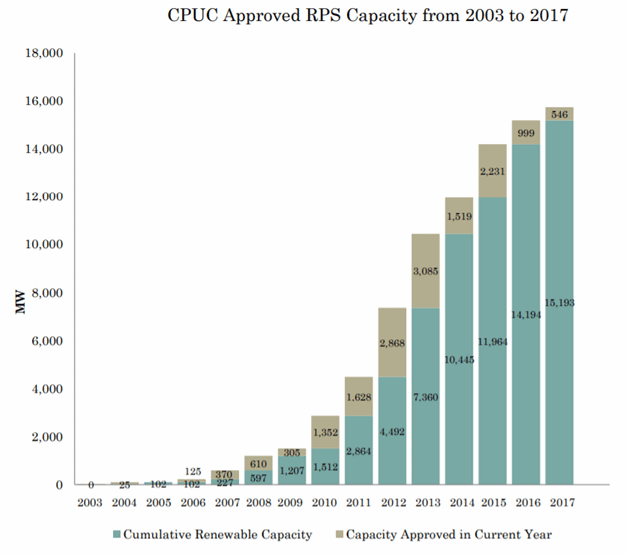California Regulator Establishes Requirements for 60 Percent Renewable Standard

The California Public Utilities Commission on June 28 finalized the procurement levels required under the state’s renewable portfolio standard program for years beginning in 2021 that were revised by Senate Bill 100 enacted last year. The law requires 60 percent of electricity retail sales to come from renewable resources by 2030.
The agency revised the procurement quantity levels for all compliance periods, beginning with the 2021-2024 period. Retail sellers must procure 44 percent of their sales from renewables by the end of 2024, 52 percent by 2027, and 60 percent by 2030. For each three-year period from 2031, each seller must ensure sufficient RPS-eligible resources to meet 60 percent of sales on an average.
The 2018 law reinforced the state’s clean energy leadership, requiring 100 percent of the state’s electricity to be served by zero-carbon resources by 2045. California’s RPS was first established in 2002 with the goal of 20 percent renewable energy by 2017. The standard was revised four years later, setting a goal of 20 percent by 2010, and again renewed in 2008 mandating 33 percent renewables by 2020. Legislation enacted in 2015 set a target of 50 percent by 2030.
Renewable energy accounts for about 29 percent of California’s power mix, according to the state’s Energy Commission. Retail sellers either met or exceeded the interim 27 percent target for 2017, and are on track to achieve their compliance requirements, according to the annual RPS report issued last November. Since 2003, the three large investor-owned utilities have contracted for almost 16 gigawatts of renewable capacity under the RPS program.
EnerKnol Pulses like this one are powered by the EnerKnol Platform—the first comprehensive database for real-time energy policy tracking. Sign up for a free trial below for access to key regulatory data and deep industry insights across the energy spectrum.
ACCESS FREE TRIAL